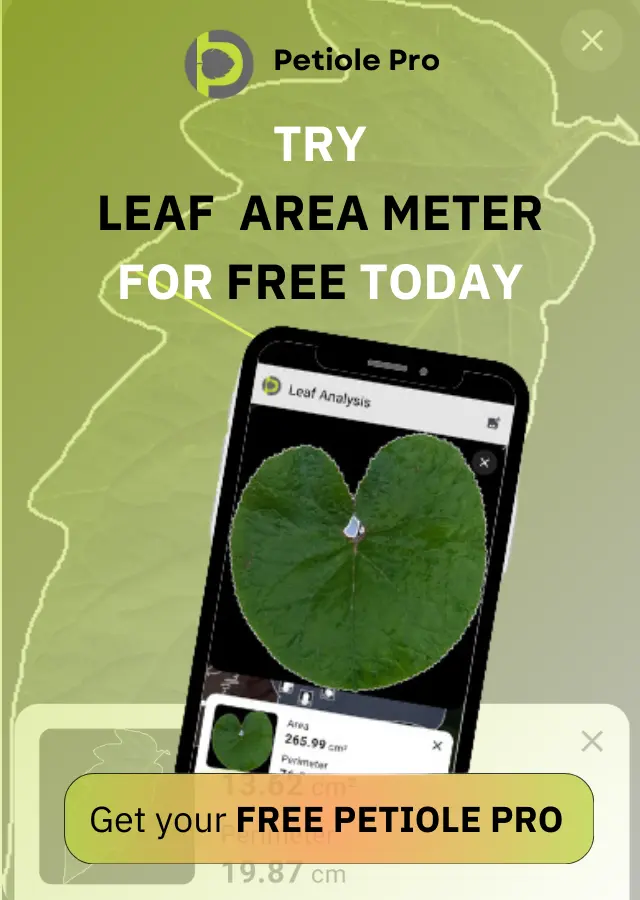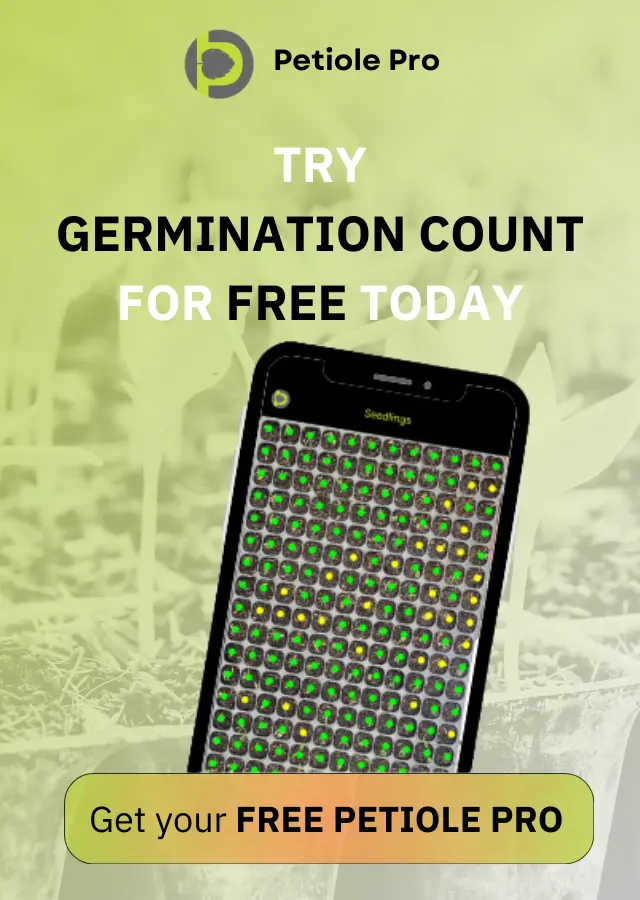🌱 Monogerm vs. Multigerm - How AI is Revolutionizing Sugar Beet Farming 🌱


Imagine you have two kinds of seeds. One that grows into one plant (monogerm).
Another that can grow into many plants all crowded together (multigerm). Sugar beet farmers want each seed to grow into just one plant so they have space to grow big and strong.
But sorting these seeds is hard. Because they look very similar 🤯
If too many multigerm seeds are planted, it makes it harder for the plants to grow well, and the farmer has to do extra work to fix it. How is it possible to solve this problem?
AI for Sugar Beet: Seed Classification
High-quality seeds are essential for optimal sugar beet production. Seed quality directly impacts factors like:
- Disease and pest resistance.
- Seedling germination rates.
- Uniformity in plant growth and maturity.
- Effective fertilizer and nutrient absorption.
Ultimately, using high-quality seeds leads to higher yields, increased profitability and reduced labour costs.
 The sugar beet seeds are shown in two forms: (a) monogerm and (b) multigerm. Source: Beyaz and Saripinar, 2024
The sugar beet seeds are shown in two forms: (a) monogerm and (b) multigerm. Source: Beyaz and Saripinar, 2024
The Challenge of Multigerm Seeds
Sugar beet seeds can be monogerm (single embryo) or multigerm (multiple embryos).
Monogerm seeds are preferred because they enable precise sowing using machinery and support optimal plant growth and development.
Multigerm seeds pose problems. Uneven plant spacing due to multiple seedlings from a single seed requires increased labour for thinning out crowded seedlings. This also reduces yields due to competition among plants.
Traditional separation methods (e.g., gravity separation) are often ineffective at completely removing multigerm seeds and can lead to the loss of valuable monogerm seeds.
 Embryos of sugar beet seeds. Source: Beyaz and Saripinar, 2024
Embryos of sugar beet seeds. Source: Beyaz and Saripinar, 2024
 Double and triple-ruch sugar beet seed sections. Source: Beyaz and Saripinar, 2024
Double and triple-ruch sugar beet seed sections. Source: Beyaz and Saripinar, 2024
The Potential of AI-Powered Seed Classification
This research explores real-time seed classification using the You Only Look Once (YOLO) object detection model.
Two YOLO variations were tested: YOLOv4 and YOLOv4-tiny. These models were chosen based on their proven performance in object detection tasks and their suitability for real-time applications.
YOLO models were deployed on two NVIDIA AI platforms: Jetson Nano and Jetson TX2.
Key Findings of the Sugar Beet Research
-
Speed and Accuracy Comparison: YOLOv4-tiny consistently achieved significantly higher Frames Per Second (FPS) than YOLOv4 on both platforms, making it more suitable for real-time applications. Higher FPS translates to faster and more efficient seed sorting. However, both models achieved high accuracy rates in distinguishing between monogerm and multigerm seeds. YOLOv4-tiny accuracy ranged from 81% to 99%. YOLOv4 accuracy ranged from 92% to 100%, demonstrating slightly superior performance.
-
The Trade-off Between Speed and Accuracy: While compact models like YOLOv4-tiny generally offer better speed on mobile AI devices, the choice between models depends on the specific requirements of the task. If extremely high accuracy is paramount, even with a slight speed trade-off, YOLOv4 might be preferred.
 Accuracy and FPS samples of sugar beet seeds detection with YOLOv4 and YOLOv4-tiny models at Jetson Nano. Source: Beyaz and Saripinar, 2024
Accuracy and FPS samples of sugar beet seeds detection with YOLOv4 and YOLOv4-tiny models at Jetson Nano. Source: Beyaz and Saripinar, 2024
 Accuracy and FPS samples of sugar beet seeds detection with YOLOv4-tiny model at TX2. Source: Beyaz and Saripinar, 2024
Accuracy and FPS samples of sugar beet seeds detection with YOLOv4-tiny model at TX2. Source: Beyaz and Saripinar, 2024
 YOLOv4 model application with accuracy, frame per second (FPS) and mean average precision (mAP) values for sugar beet seed detection in NVIDIA Jetson TX2 AI board. Source: Beyaz and Saripinar, 2024
YOLOv4 model application with accuracy, frame per second (FPS) and mean average precision (mAP) values for sugar beet seed detection in NVIDIA Jetson TX2 AI board. Source: Beyaz and Saripinar, 2024
 YOLOv4 model application with accuracy, frame per second (FPS) and mean average precision (mAP) values for sugar beet seed detection in NVIDIA Jetson Nano AI board. Source: Beyaz and Saripinar, 2024
YOLOv4 model application with accuracy, frame per second (FPS) and mean average precision (mAP) values for sugar beet seed detection in NVIDIA Jetson Nano AI board. Source: Beyaz and Saripinar, 2024
Potential Implications for the Sugar Beet Industry
This research highlights the potential of AI-powered systems to significantly improve seed classification accuracy and efficiency in the sugar beet industry.
By effectively identifying and removing multigerm seeds in real-time, these systems could lead to reduced seed waste, optimized sowing processes and improved crop yields. Ultimately, this will increase profitability for farmers.
Limitations and Future Directions
- The authors acknowledge that the relatively small dataset used to train the models could lead to overfitting. Future studies could benefit from larger and more diverse datasets to enhance model generalizability.
- Further research could explore the integration of these AI models into existing seed processing systems for seamless real-world deployment.
Citation
Beyaz, A., Saripinar, Z. Sugar Beet Seed Classification for Production Quality Improvement by Using YOLO and NVIDIA Artificial Intelligence Boards. Sugar Tech (2024). https://doi.org/10.1007/s12355-024-01402-3
Practical application of Deep Learning for Seed Quality Assurance
Check the online-based tool for Seed Quality Assurance (Soybean edition; can be adjusted for sugar beed seeds):
Petiole Pro: Soybean Seeds Quality Assurance Web-Tool
If you would like to customize this web tool for your seed QA needs for FREE, please, let us know - support@petiolapp.com
 Place the soybean seeds on or next to the calibrating plate to obtain an accurate seed count, average seed area, and standard deviation. Source: Petiole Pro
Place the soybean seeds on or next to the calibrating plate to obtain an accurate seed count, average seed area, and standard deviation. Source: Petiole Pro
 An automatic seed counter can process a high volume of seeds. In the figure above, 603 soybean seeds have been detected. Source: Petiole Pro
An automatic seed counter can process a high volume of seeds. In the figure above, 603 soybean seeds have been detected. Source: Petiole Pro
 Seed area distribution analysis available for each photo. Source: Petiole Pro
Seed area distribution analysis available for each photo. Source: Petiole Pro
Calibrating Plate for Petiole Pro
Without the calibrating plate, you will only obtain the seed count.
With the calibrating plate, you can obtain:
- seed count,
- average seed area, and
- standard deviation.
You can download the calibration plate from Google Drive to print it using your own printer or purchase it directly from us.🌱

